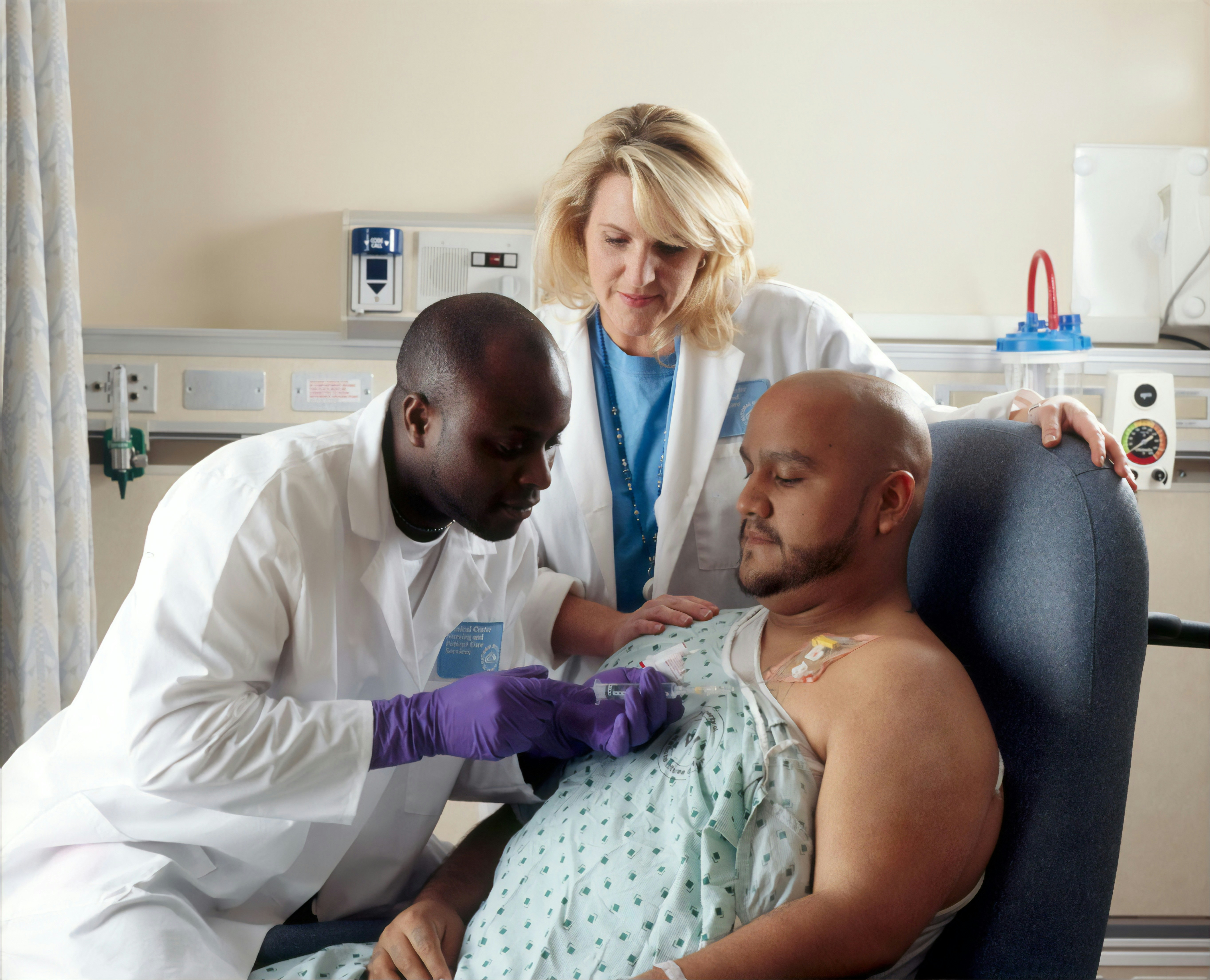Wondering when you should start getting screened for prostate cancer? It's a question that often lingers in the minds of many men. Well, look no further for answers. In this article, we will explore the recommended age to begin screenings for prostate cancer, helping you gain a clearer understanding and take proactive steps towards your health. So, let's dive in and find out when it's best to start monitoring your prostate health!
Understanding Prostate Cancer
Why does prostate cancer occur?
Prostate cancer occurs when cells in the prostate gland, which is a small walnut-shaped gland found in males, begin to grow uncontrollably. The exact cause of prostate cancer is still unknown, but there are several factors that can increase the risk of developing this disease. These factors include age, family history, ethnicity, and certain genetic mutations.
What is the function of the prostate gland?
The prostate gland plays a crucial role in the male reproductive system. Its main function is to produce seminal fluid, which nourishes and transports sperm. The prostate gland is located below the bladder and surrounds the urethra, the tube responsible for carrying urine and semen out of the body.
How common is prostate cancer?
Prostate cancer is one of the most common types of cancer in men. According to the American Cancer Society, approximately 1 in 9 men will be diagnosed with prostate cancer in their lifetime. It is estimated that there will be about 248,530 new cases of prostate cancer and around 34,130 deaths from the disease in the United States in 2021. While prostate cancer mainly affects older men, it can still occur in younger individuals.
The Importance of Prostate Cancer Screening
The role of early detection in treatment success
Early detection plays a pivotal role in the successful treatment of prostate cancer. When prostate cancer is diagnosed at an early stage, it is more likely to be localized and confined to the prostate gland, making treatment options more effective. Regular screening allows for the identification of prostate cancer before it progresses and spreads to other areas of the body.
Understanding the prostate cancer screening process
Prostate cancer screening typically involves two main tests: the Digital Rectal Examination (DRE) and the Prostate-Specific Antigen (PSA) test. During a DRE, a healthcare professional examines the prostate gland by inserting a gloved finger into the rectum to feel for any lumps or abnormalities. The PSA test, on the other hand, measures the level of PSA in the blood, as an elevated level may indicate the presence of prostate cancer.
Benefits and concerns of prostate cancer screening
Prostate cancer screening offers several benefits, including the ability to detect cancer at an early stage, potentially saving lives. It also provides an opportunity for timely intervention and treatment, leading to improved outcomes. However, there are also concerns associated with prostate cancer screening, such as false-positive results, which can lead to unnecessary anxiety and further invasive procedures. It is important for individuals to weigh the benefits and risks with their healthcare provider before deciding to undergo screening.
Factors Influencing the Onset of Prostate Cancer
Genetic factors and prostate cancer
Genetics can play a significant role in the development of prostate cancer. Research has identified specific gene mutations, such as BRCA1 and BRCA2, that increase the risk of developing both prostate and breast cancer. Additionally, individuals with a family history of prostate cancer are more likely to develop the disease themselves. Genetic counseling and testing can help identify individuals who may have a higher risk of developing prostate cancer.
Lifestyle and dietary factors
Certain lifestyle and dietary factors have been linked to an increased risk of prostate cancer. A diet high in red and processed meats, as well as a lack of fruits and vegetables, has been associated with a higher incidence of prostate cancer. Obesity, smoking, and sedentary behavior have also been identified as risk factors. Adopting a healthy lifestyle, including regular exercise and a balanced diet, may help reduce the risk of developing prostate cancer.
Influence of age and ethnicity on prostate cancer occurrence
Age is an important risk factor for prostate cancer. The risk of developing prostate cancer increases significantly after the age of 50, with the majority of cases occurring in men over the age of 65. However, prostate cancer can also affect younger individuals, especially those with a family history of the disease. Ethnicity also plays a role, with African American men having a higher risk of developing prostate cancer compared to men of other ethnicities.
Recommended Age for Prostate Cancer Screening
General recommendations for screening age
The age at which individuals should start getting screened for prostate cancer depends on various factors, including personal risk factors and expert recommendations. In general, it is recommended that men discuss the possibility of screening with their healthcare provider starting at the age of 50. However, for individuals at higher risk, such as those with a family history of prostate cancer or certain genetic mutations, screening may be recommended earlier.
Interplay of family history and screening age
Family history plays an important role in determining the appropriate age for prostate cancer screening. If you have a father, brother, or other close relative who has been diagnosed with prostate cancer, it is recommended to start discussing screening options with your healthcare provider at an earlier age, such as 40 or 45. Your healthcare provider can help assess your individual risk based on your family history and make personalized recommendations.
Expert opinions on screening age and frequency
Various organizations and expert panels have provided guidelines regarding the age and frequency of prostate cancer screening. For example, the American Cancer Society recommends that men have an informed decision-making discussion with their healthcare provider about screening starting at age 50. The United States Preventive Services Task Force suggests discussing the benefits and risks of screening with healthcare providers starting at age 55. Ultimately, the decision on when to start screening and how often to have it done should be based on an individual's risk profile and discussions with their healthcare provider.

Understanding PSA Levels
What is PSA and its role in prostate health?
Prostate-Specific Antigen (PSA) is a protein produced by the cells of the prostate gland. Its primary role is to liquefy semen, allowing sperm to swim freely. PSA levels can provide valuable information about the health of the prostate, as elevated levels may indicate the presence of prostate cancer or other prostate disorders.
What is a normal PSA level?
The interpretation of PSA levels can vary depending on several factors, such as age and prostate size. Generally, a PSA level below 4 nanograms per milliliter (ng/mL) is considered normal, but it is important to note that some men with normal PSA levels can still have prostate cancer, and some men with elevated PSA levels do not have cancer. Additional factors, such as the rate of PSA increase over time, can also help determine the significance of PSA levels.
Impact of age on PSA levels
PSA levels tend to increase naturally with age in most men. This is due to the normal growth of the prostate gland over time. It is important to consider age-specific reference ranges when interpreting PSA levels. Younger men generally have lower PSA thresholds, while older men may have higher thresholds for what is considered normal. Healthcare providers take into account age-specific ranges and changes over time when assessing PSA levels.
Types of Prostate Cancer Screening Tests
Digital Rectal Examination (DRE)
The Digital Rectal Examination (DRE) is a physical examination in which a healthcare provider inserts a gloved finger into the rectum to feel the size, shape, and texture of the prostate gland. This allows the healthcare provider to check for any abnormalities or signs of prostate cancer. The DRE is a quick and relatively non-invasive test, but it may cause some slight discomfort.
Prostate-Specific Antigen (PSA) test
The Prostate-Specific Antigen (PSA) test measures the level of PSA in the blood. A small sample of blood is taken and analyzed in a laboratory to determine the PSA level. Elevated PSA levels can be an indication of prostate cancer or other prostate conditions. The PSA test is a simple blood test, but it is important to note that it is not specific to prostate cancer and can result in false-positive or false-negative results.
Genetic tests and biomarker tests
In addition to the DRE and PSA test, there are also genetic tests and biomarker tests available for prostate cancer screening. These tests may involve analyzing certain genetic mutations or biomarkers associated with prostate cancer. Genetic tests can help identify individuals with an increased risk of developing prostate cancer, while biomarker tests can provide additional information about the presence and aggressiveness of the disease.
Understanding the Results of Prostate Cancer Screening
Interpreting PSA test results
PSA test results are typically reported as the PSA level in nanograms per milliliter (ng/mL). If the PSA level is within the normal range, it does not necessarily mean that prostate cancer is absent, as some cases may have normal PSA levels. Conversely, an elevated PSA level does not automatically indicate the presence of prostate cancer, as it can be caused by non-cancerous conditions, such as prostate inflammation or enlargement. Additional tests and further evaluation may be necessary to determine the cause of elevated PSA levels.
What happens after a positive test result?
If a PSA test or other screening test indicates the possibility of prostate cancer, further evaluation is usually necessary. This may involve additional tests, such as a prostate biopsy, to obtain a definitive diagnosis. The biopsy involves the collection of small tissue samples from the prostate gland, which are examined under a microscope to determine the presence of cancer cells.
Steps following an abnormal DRE
If a Digital Rectal Examination (DRE) reveals potential abnormalities, further evaluation is typically required. This may involve additional diagnostic tests, such as a PSA test or a prostate biopsy, to determine the cause of the abnormalities. It is important to remember that an abnormal DRE does not necessarily mean prostate cancer is present. It may be caused by non-cancerous conditions, such as an enlarged prostate or inflammation.
Weighing the Risks and Benefits of Prostate Cancer Screening
Prostate cancer over-diagnosis
One of the risks associated with prostate cancer screening is over-diagnosis. Over-diagnosis refers to the detection and treatment of prostate cancer that would not have caused harm or required treatment during a person's lifetime. This can lead to unnecessary treatments, such as surgery or radiation therapy, which may have adverse effects on quality of life without providing significant benefits.
Understanding false positive and false negative results
Prostate cancer screening can also result in false-positive or false-negative results. A false-positive result occurs when screening indicates the presence of cancer when no cancer is actually present. This can lead to unnecessary anxiety and further invasive procedures. Conversely, a false-negative result occurs when screening fails to detect cancer that is actually present. Regular screening can help minimize the risk of false-negative results.
Weighing physical and psychological impact of screening
Screening for prostate cancer can have physical and psychological impacts. Physical impacts can include the discomfort associated with certain tests, such as the DRE or biopsy, as well as potential side effects from subsequent treatment. The psychological impact may include anxiety, stress, and uncertainty about the test results and potential diagnosis. It is important for individuals to consider these impacts and discuss them with their healthcare provider when making decisions about prostate cancer screening.
Speaking with your Doctor about Prostate Cancer Screening
Questions to ask your doctor
When discussing prostate cancer screening with your doctor, it is important to ask relevant questions to help you make an informed decision. Some questions you may consider asking include:
- What are my individual risk factors for developing prostate cancer?
- What screening tests do you recommend for me and why?
- What are the potential benefits and risks of screening?
- How often should I undergo screening?
- What happens if a screening test indicates possible prostate cancer?
- What are the available treatment options if prostate cancer is diagnosed?
Understanding your personal risk profile
Understanding your personal risk profile is essential when considering prostate cancer screening. This includes factors such as your age, family history of prostate cancer, and any genetic mutations that may increase your risk. By assessing your personal risk profile, your healthcare provider can provide individualized recommendations regarding screening.
Making an informed decision about screening
Ultimately, the decision to undergo prostate cancer screening is a personal one. It is important to gather information, ask questions, and have open discussions with your healthcare provider to ensure you are making an informed decision. Consider your personal risk factors, the benefits and risks of screening, and the potential impact on your physical and emotional well-being before making a decision.
Living with Prostate Cancer
Treatment options for prostate cancer
If prostate cancer is diagnosed, there are several treatment options available. The choice of treatment depends on various factors, including the stage and aggressiveness of the cancer, as well as the individual's overall health and personal preferences. Treatment options may include surgery, radiation therapy, hormone therapy, chemotherapy, and active surveillance. Your healthcare provider will work with you to determine the most appropriate treatment plan.
Lifestyle changes for managing prostate cancer
In addition to medical treatments, certain lifestyle changes can help manage prostate cancer and improve overall well-being. These may include adopting a healthy diet rich in fruits, vegetables, and whole grains, exercising regularly, maintaining a healthy weight, and managing stress. It is important to work closely with your healthcare team to develop a comprehensive plan that addresses both the medical and lifestyle aspects of managing prostate cancer.
Support systems for people with prostate cancer
Living with prostate cancer can be challenging, both physically and emotionally. It is essential to have a strong support system in place. This can include family and friends who provide emotional support, as well as support groups and counseling services that offer guidance and a platform to share experiences with others going through similar situations. Additionally, healthcare providers, such as oncologists and nurses, can provide valuable support and guidance throughout the prostate cancer journey.
In conclusion, understanding prostate cancer, the importance of screening, and the factors influencing its onset is crucial in promoting early detection and successful treatment. By considering genetic factors, lifestyle choices, and age-specific recommendations for screening, individuals can make informed decisions about their prostate health. Regular screening tests like the DRE and PSA test, along with genetic and biomarker tests, can provide valuable information about the presence and progression of prostate cancer. It is important to discuss screening options and results with your healthcare provider, as well as weigh the benefits and risks associated with prostate cancer screening. Lastly, living with prostate cancer requires a comprehensive approach that includes appropriate treatment options, lifestyle modifications, and a strong support system. By prioritizing proactive measures, individuals can take control of their prostate health and ultimately improve their overall well-being.



